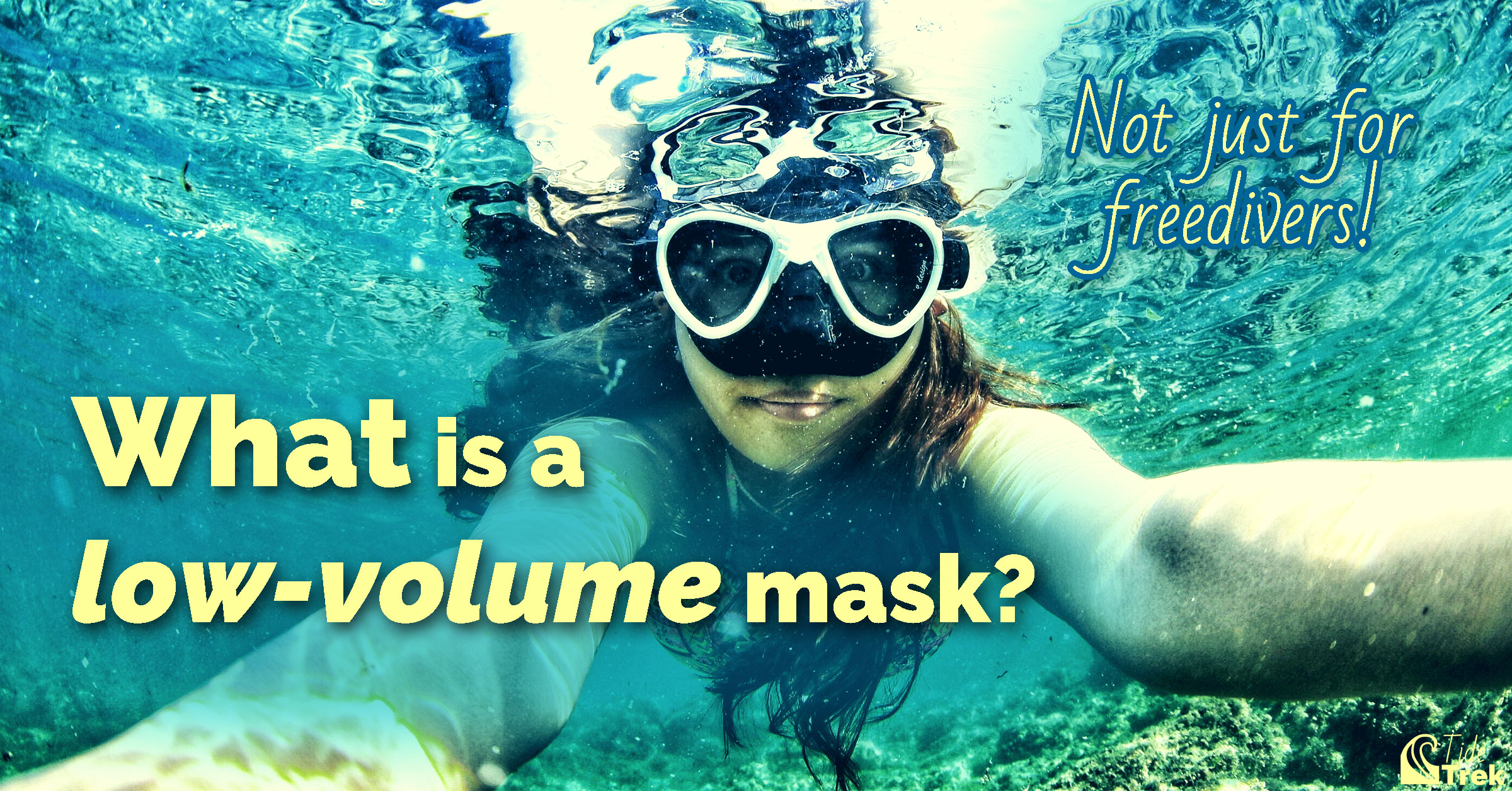
In the old days of SCUBA, when most divers were frogmen, SCUBA equipment looked very different than it does today. The dive mask has traditionally been a piece of the gear that brings to mind a modern VR headset. Solid, large viewing windows, a bit like a fishbowl strapped to your face. While more traditional dive masks are still in production (they do have their merits), a different trend has rapidly overtaken the market in recent years: the low-volume mask. This term is nearly unavoidable at dive shops these days and frequently touted as a selling point. However, many SCUBA divers find themselves confused by the term. Exactly what is a low-volume dive mask? And more importantly, are they popular for a good reason?
A low-volume mask is specially designed to minimize the amount of air inside the mask.
Before their rise in popularity, freedivers and spearfishers used these masks exclusively. For these sports, “low-volume” means roughly 100 mL or less. However, as manufacturers have adapted the design for SCUBA divers and snorkelers, what exactly constitutes low-volume has become more variable. These days, low-volume usually means any mask that sits close to the face (sometimes called low-profile instead). Masks marketed specifically to freedivers and spearfishers now often have the descriptor “ultra-low-volume” or “micro mask” (here’s an example from Aqua Lung) to distinguish them from other models.
So why is any of this important? Why do freedivers care about low-volume? How is the design of any use to someone who isn’t a freediver?
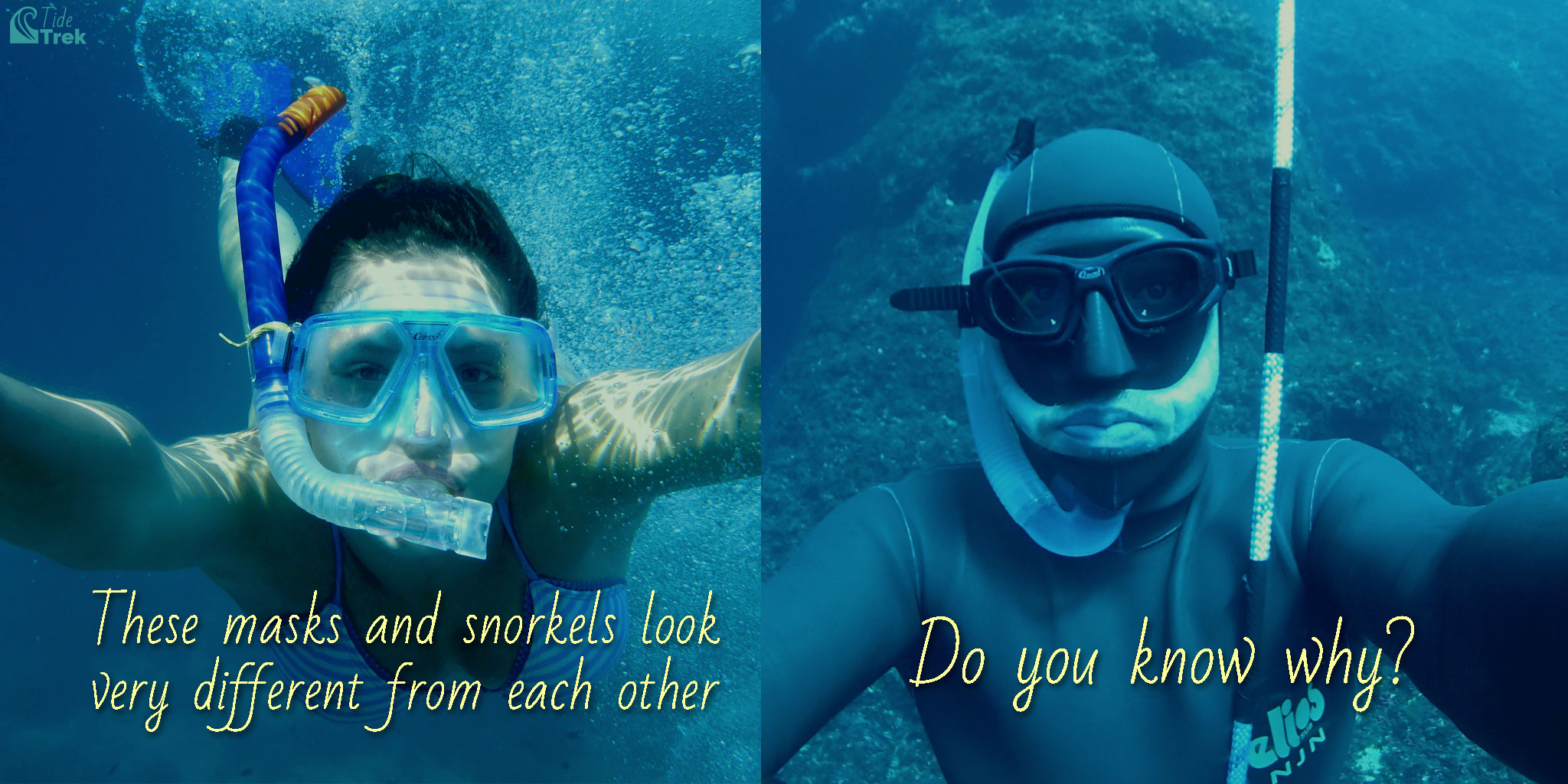


What is a low-volume dive mask used for?
Low-volume masks are an ideal choice for anyone who needs to conserve their breath while diving or wants a mask that is very easy to clear. Freedivers and spearfishers benefit the most from these advantages. However, the low-volume design also comes with other benefits that make them appealing to SCUBA divers and casual snorkelers too.
Freediving and spearfishing
For apneic (breath-hold) sports, low-volume masks are essential because you need very little air to equalize them at depth.
Freedivers and spearfishers dive many meters underwater on breath-hold alone. As the pressure increases with depth, the volume of air inside the mask will compress. This phenomenon can result in a form of barotrauma known as mask squeeze. To prevent this, the diver must equalize the air space inside the mask to compensate for the lost volume. They do so by exhaling a little bit with their nose. A low-volume dive mask has less airspace, so the diver does not need to waste nearly as much precious breath on this necessary activity.
Ultra-low-volume masks or micro masks can have internal air volumes as low as 75 mL.
Some folks looking to maximize their breath-hold have even figured out ways to hack their masks for volumes between 20 – 50 mL! In the old days, freedivers would similarly “hack” their masks by fitting special inserts inside them to reduce their volume.
Because of the low-volume design, freediving masks are sleeker and less obtrusive than the masks SCUBA divers and snorkelers typically use. They are lighter, easier to travel with, and have excellent fields-of-vision despite their size (sometimes even better than large-windowed masks!)
As recreational SCUBA and snorkeling have become more popular, equipment manufacturers have adapted the traditional “fishbowl” design. SCUBA masks are now more comfortable and accessible to a broader range of face sizes and shapes. As it turns out, the low-volume design naturally lends itself to these changes.
SCUBA diving
Low-volume masks are popular with SCUBA divers for being easy to clear and lightweight.
I know mask clearance is a skill many divers hate with a passion. For those of us who have trouble with it, or need to do it often (e.g. instructors), a low-volume dive mask can be a great boon. Even when fully flooded, these masks only hold 100 mL or so of water. They also tend to have very soft skirts. That means many folks find clearance much less of a hassle, requiring minimal breath and exhalation force.
When a mask is easy to clear, a diver is less likely to waste air, tilt their head around awkwardly, and (most importantly!) lose control of their buoyancy.
Some SCUBA divers like low-volume masks for their visual fields.
Many low-volume masks feature an inverted teardrop lens shape that allows you to look down along your torso without moving your neck. This is a bonus for some divers who consequently find it easier to check their pressure gauge just by glancing down with their eyes. On some models, the peripheral (horizontal) vision of low-volume masks can even rival higher volume masks with side-panel windows.
The small, lightweight profile of low-volume masks also makes them a popular choice as backups and spares. For example, frameless low-volume masks can easily slip into a BCD pocket or be stuffed in the corner of a small gear bag.
Snorkeling
Why else might a low-volume dive mask be a good choice? As someone with a small and narrow face, it’s easier for me to find a perfect fit with low-volume masks because of their light and compact design. I don’t just use them for freediving, but casual snorkeling and SCUBA as well!
The mask I’ve preferred for several years is the Cressi Occhio Plus. Though Cressi has discontinued this mask, the basic elements of its design are still present in newer models (like the Matrix). Before I tried my Cressi, I had no idea a mask could be so comfortable! It never feels too heavy, almost never leaks, and I often forget it’s even on my face!
One way to design a low-volume mask is to reduce the size of the glass lenses. Because the lenses are so close to your face, this doesn’t restrict your vision as much as you might imagine. Even so, for folks who find typical low-volume designs uncomfortable or claustrophobic, frameless masks are an excellent alternative. For more on the intriguing design of frameless masks and their functional advantages, you can read all about them in this article I wrote.
Is a low-volume dive mask always a better choice?
As you can see, there are many scenarios beyond breath conservation where low-volume masks offer benefits. That doesn’t mean more traditional designs don’t have their advantages, but for the majority of recreational divers and snorkelers, low-volume is the way to go!
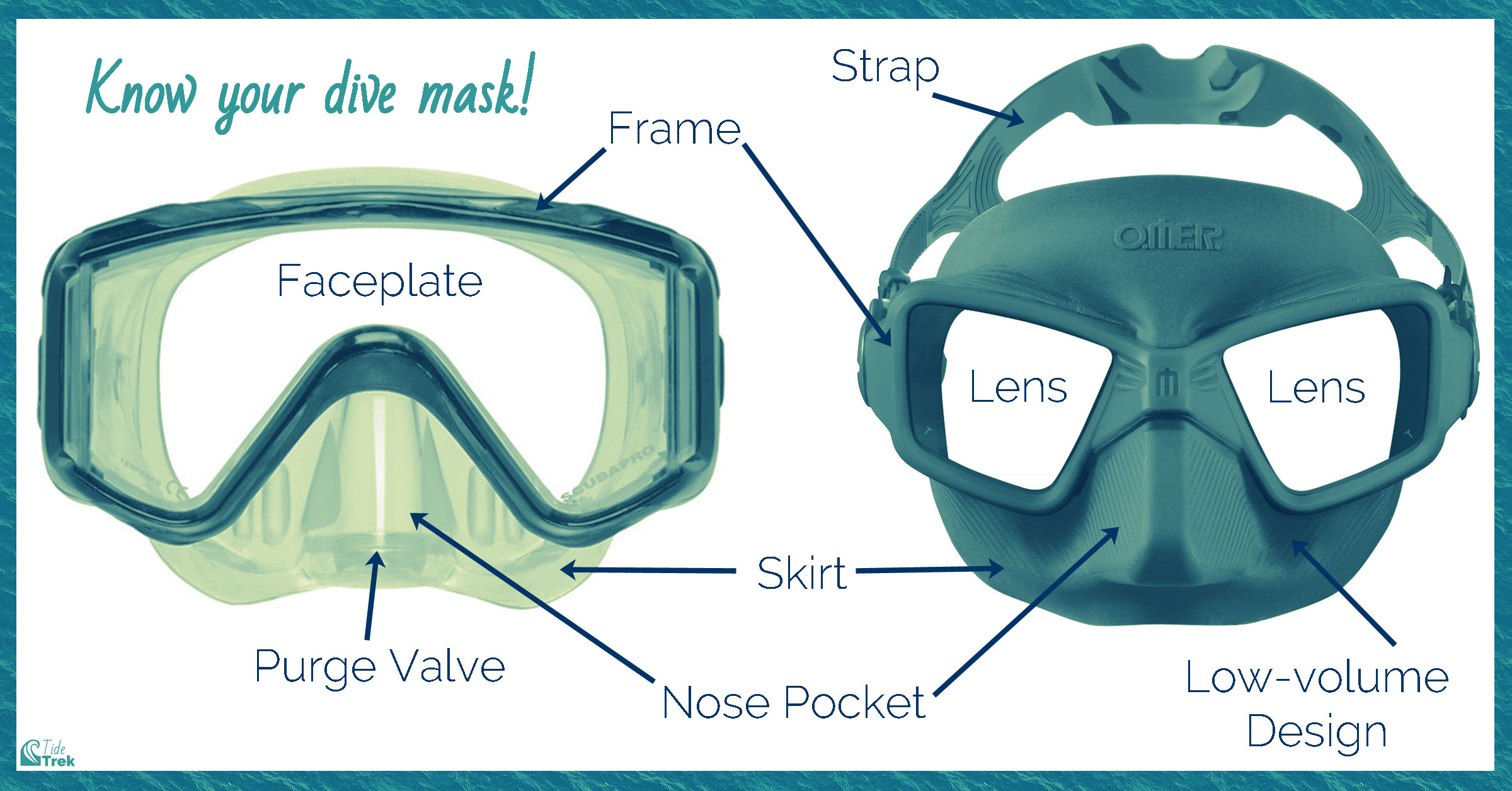


Advantages of a low-volume dive mask
The low-volume design offers advantages across all underwater sports. The many brands and models out there mean there are options for folks of all ability levels. The low profile is also ideal for folks wishing to use corrective lenses, which work best when positioned close to your eyes (just like glasses!)
- Less air required to equalize
- Easier to clear when flooded
- Low profile provides wide field-of-vision
- Low profile reduces drag
- Lightweight feels more comfortable
- Lightweight easier to travel with
- Better fit on smaller faces than traditional designs
- Low profile is better for prescription lenses
Disadvantages of a low-volume dive mask
The disadvantages of low-volume masks have more to do with personal preferences than anything innate. Folks with larger faces can have more trouble finding a good fit. In addition, anyone who’s used to using a more traditional SCUBA mask (especially one with a continuous faceplate rather than two lenses) may have difficulty becoming accustomed to a low profile mask.
- Can feel restrictive or claustrophobic
- Can be harder to fit on larger faces or noses
- Long lashes can smear the lenses
- Not many options with a continuous faceplate
- Low profile frame can press against forehead
- Minimal airspace is less insulating in cold water
- Peripheral vision can be more limited with some models
Low-volume masks are quickly dominating the dive mask market. In some dive shops, it can be hard to even find a mask that isn’t low-volume! I personally feel like there will always be a niche market for higher volume masks (particularly more traditional designs), but they are sadly becoming harder to find!
What is the best low-volume dive mask?
The plethora of low-volume masks on the market means there is something out there for everyone. In the section below, you’ll find a shortlist of the highest-rated low-volume masks on the market, including the face shapes they’re ideal for. These listings are from Leisure Pro, which is my preferred online dive shop (for Canada/US shipping). For folks in the UK and Europe, Simply Scuba is a great option.
1. Best overall: Cressi Big Eyes Evolution Mask
- Price category: Premium $$$
- Ideal face-shape: Small to average faces
- Color options: Black or Clear, each with a variety of color accents
- Corrective lenses available: Yes, but the snap ring may be prone to breaking during lens exchange
- Special features: Buckles pivot in all directions and are attached to the frame with a strong, flexible elastomer; teardrop-shaped lenses are slightly inclined downward for an exceptional field-of-vision
- Other notes: The Eyes Evolution model is more suitable for smaller, narrower faces
2. Most affordable and reliable: Cressi Focus Mask
- Price category: Standard $$
- Ideal face-shape: Small to average faces
- Color options: All Black, Clear with a variety of colored frames
- Corrective lenses available: Yes
- Special features: Swivel adjust buckles for a better strap fit; well-defined and prominent nose pocket for easy nose pinch even with gloved fingers
- Other notes: A tried and true model that has been in production for decades. Several users have owned this mask for over 10 years and used it on hundreds of dives. A versatile design popular with technical divers and spearfishers as well!
3. Best for wide faces: TUSA Liberator-Plus Two Window Mask
- Price category: Standard $$
- Ideal face-shape: Wider, round faces
- Low-volume: Yes
- Color options: All Black or Clear with a variety of color accents
- Corrective lenses available: Yes
- Special features: Large lenses make a great choice for photographers and folks who may find low-volume masks more claustrophobic
- Other notes: A durable model that TUSA has produced for over 10 years with some users having owned theirs for as long.
4. Best for narrow faces: Aqua Lung Linia Mask
- Price category: Premium $$$
- Ideal face-shape: Narrow to average faces; designed specifically with women’s face shapes in mind (nose pocket is on the small side!)
- Color options: All Black; Clear with black frames that have pink or purple accents; Clear with white frames
- Corrective lenses available: No
- Special features: Easy adjust buckles pivot in all directions for a comfortable fit, have a push button clip release, and buckle covers to minimize hair tangling; skirt features textured bands for an improved seal against leaks; skirt extends further back on the temples giving a wider surface area for the seal
- Other notes: The internal volume of this mask is very low, making it comparable to other micro masks designed for freediving and spearfishing. Despite this, the lenses sit very close to the face, which allows for a wide field of view.
5. Best for photographers: Atomic Sub-Frame Mask
- Price category: Premium $$$
- Ideal face-shape: Two sizes available to suit a broad range of faces from small to wide (note: the “Medium” size is smaller than the “Regular” size)
- Color options: Black skirt and clear skirt, each with a variety of colored accents
- Corrective lenses available: Yes
- Special features: A sub-frame molded inside the skirt adds extra durability; a secondary stainless steel frame reinforces the nose bridge; Optical quality tempered glass maximizes light transmission (a great choice for photographers)
- Other notes: Users report the mask feels lightweight despite the sturdier frame and a large field of view. A version with anti-reflective coating on the lenses is also available for reduced glare and superior clarity and contrast (great for night dives and low-vis environments).
6. Best frameless: Atomic Frameless Mask
- Price category: Premium $$$
- Ideal face-shape: Regular size for wider, round faces; Medium size for smaller faces (this size is preferred by women)
- Color options: Black or Clear, each with a variety of color accents
- Corrective lenses available: No
- Special features: Very wide horizontal and vertical field of vision; Optical quality tempered glass maximizes light transmission (a great choice for photographers)
- Other notes: Comes in two adult sizes (Regular and Medium) to suit a wide range of faces; Clear option is preferred by folks prone to claustrophobia
7. Best ultra-low-volume: Aqua Lung Micro-Mask
- Price category: Premium $$$
- Ideal face-shape: Wide range of faces, small to large
- Low-volume: Ultra-low
- Color options: All Black or Clear with a variety of color accents
- Corrective lenses available: No
- Special features: Lenses are positioned inside the ocular orbit (the natural recessions in your face where your eyes are) for superior peripheral vision despite the compact design; strap buckles pivot in all directions and activate with a push button
- Other notes: Compact design reduces drag and buoyancy, making it ideal for freediving and spearfishing; very easy to clear
Tips for wearing low-volume masks
- As with all masks, test the fit of your low-volume mask before using it in the water for the first time (I wrote about how to do this properly in my article on how to stop leaks)
- Be sure to remove the manufacturer’s coating from the tempered glass before using the mask to reduce fogging (this great article from Girls That Scuba covers multiple methods)
- Use a good anti-fog on the glass before each diving or snorkeling session to reduce fogging (this is the one I prefer)
- Your straps should be just tight enough to gently hold the mask in place. Because low-volume masks feel lighter (especially frameless masks), you may be tempted to over-tighten the straps!
- Opt for a clear skirted mask if you’re worried about claustrophobia
- Avoid mirrored lenses unless you’re a spearfisher who really wants them. It’s safer when your buddy can see your eyes!
- If you have long hair, consider using a neoprene strap cover to avoid tangling with the strap!
And here’s a final tip from the freediving world that all underwater adventurers can benefit from:
The mask isn’t just a thing the diver wears, it is part of the diver’s face.
Do you want to feel like you belong in the water? Finding that perfect mask really helps with your mind-body connection. You’re not wearing a costume or a protective bubble, you are adding an extension to your body. Think of your mask as a part of you and your experiences with it are certain to improve!
Tell me all about your experiences with low-volume masks in the comments below! Do any of you prefer higher volume masks?
Further reading
What to look for in a dive mask: Top 5 quality indicators
How to choose a mask and snorkel: A complete guide in 3 parts
Framed vs. frameless masks: What’s the difference?



Disclaimer: Some of the links used in this article are affiliate links. That means I may get a small commission if you buy a product after following the link. If this guide helped you make a decision, consider it like giving me a little thank you!
If you want to keep updated on the content I produce here at Tide Trek, please consider signing up to my mailing list. At the end of each month I prepare a little round-up newsletter that summarizes new articles I’ve written, and content I’ve curated covering all things water sports (even some cool marine science too!)

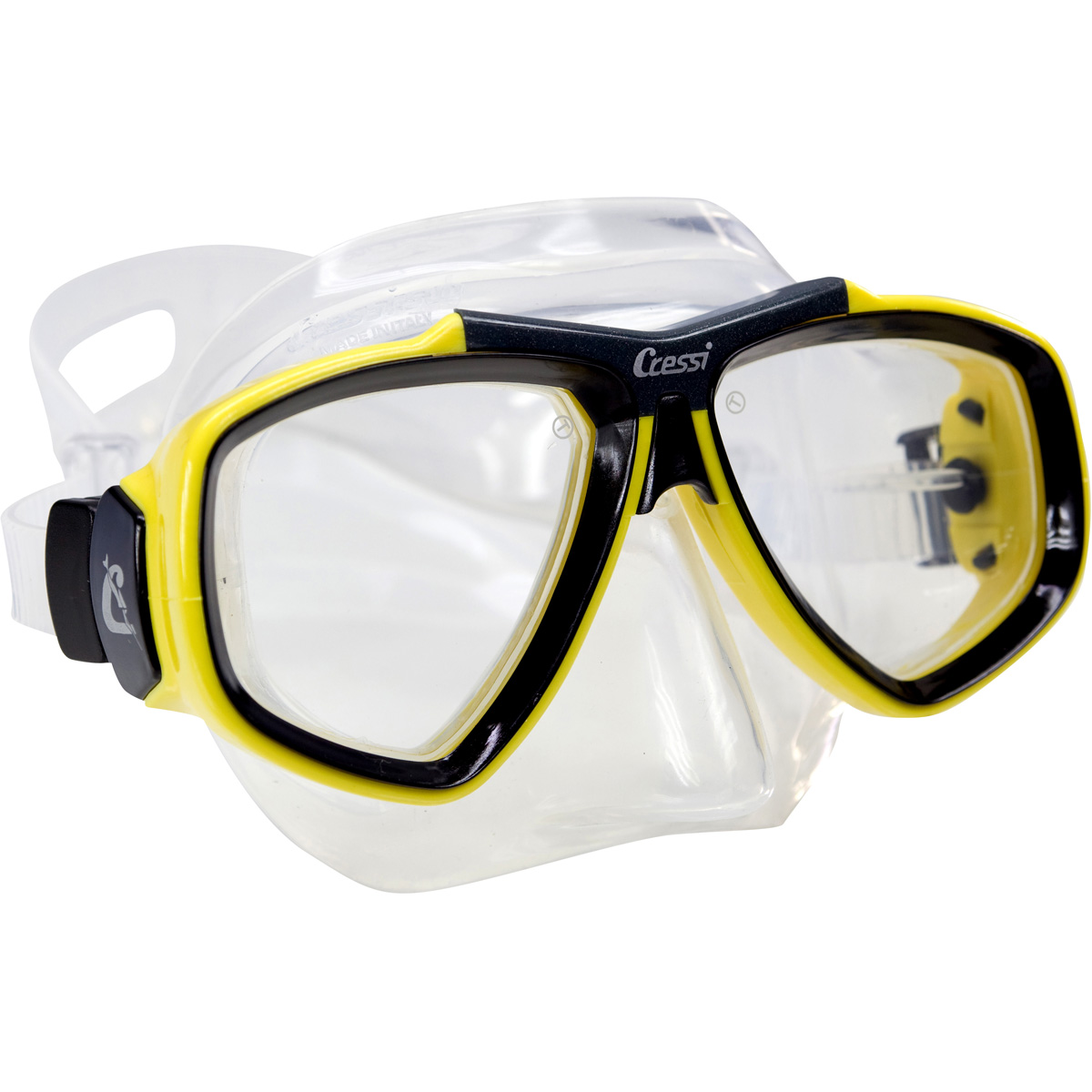
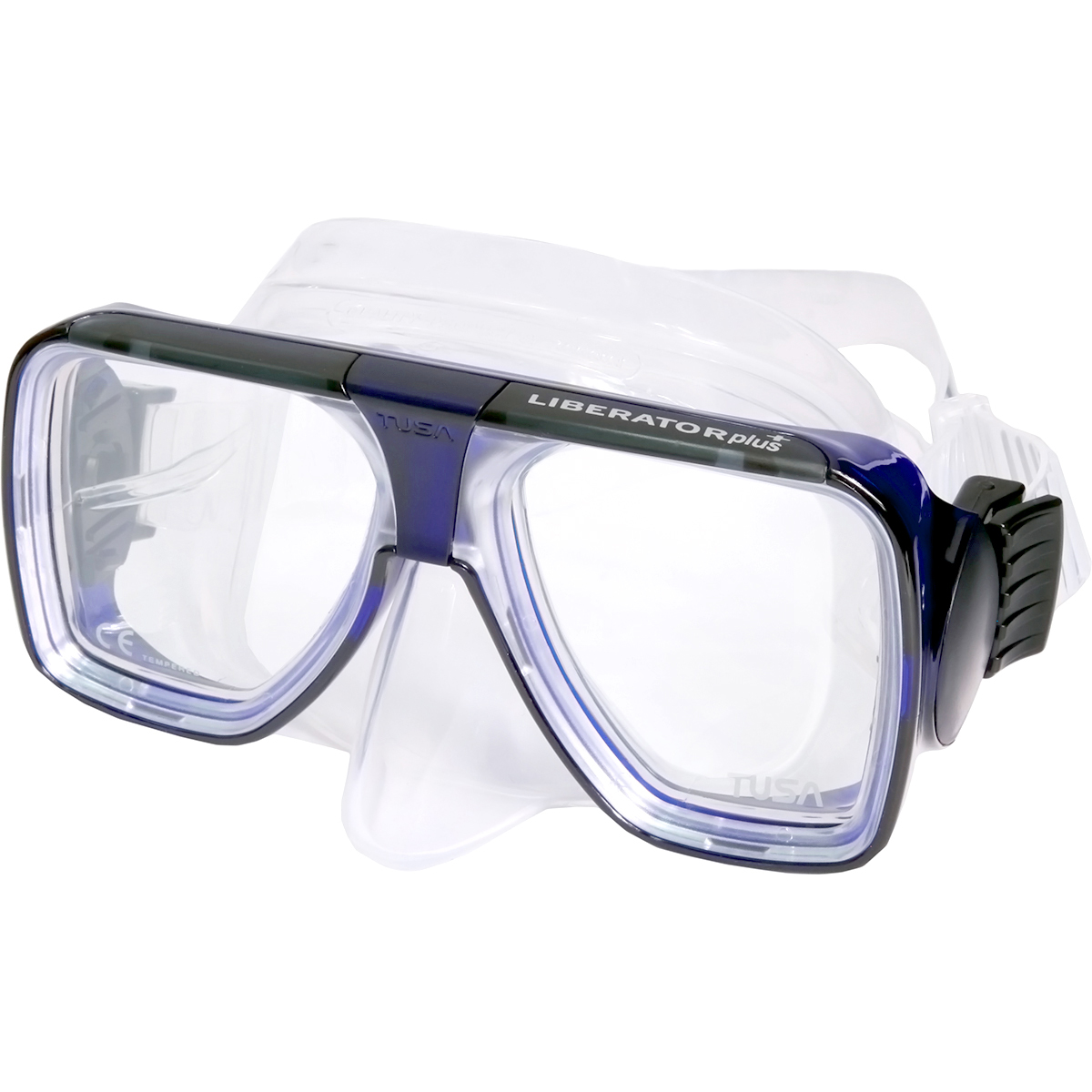
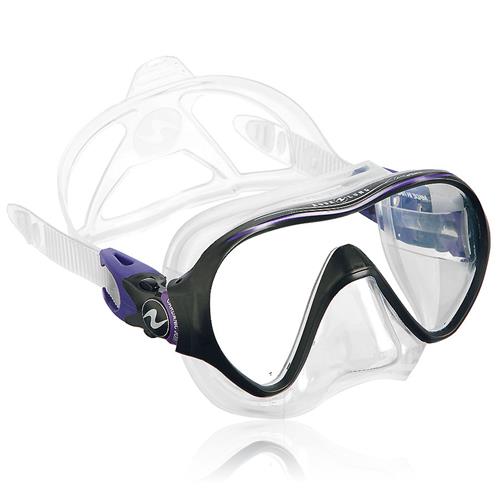
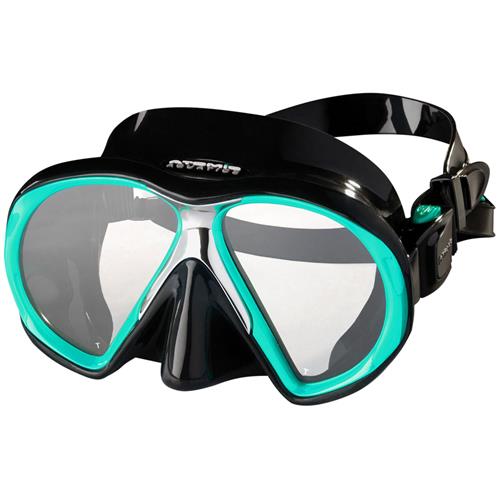
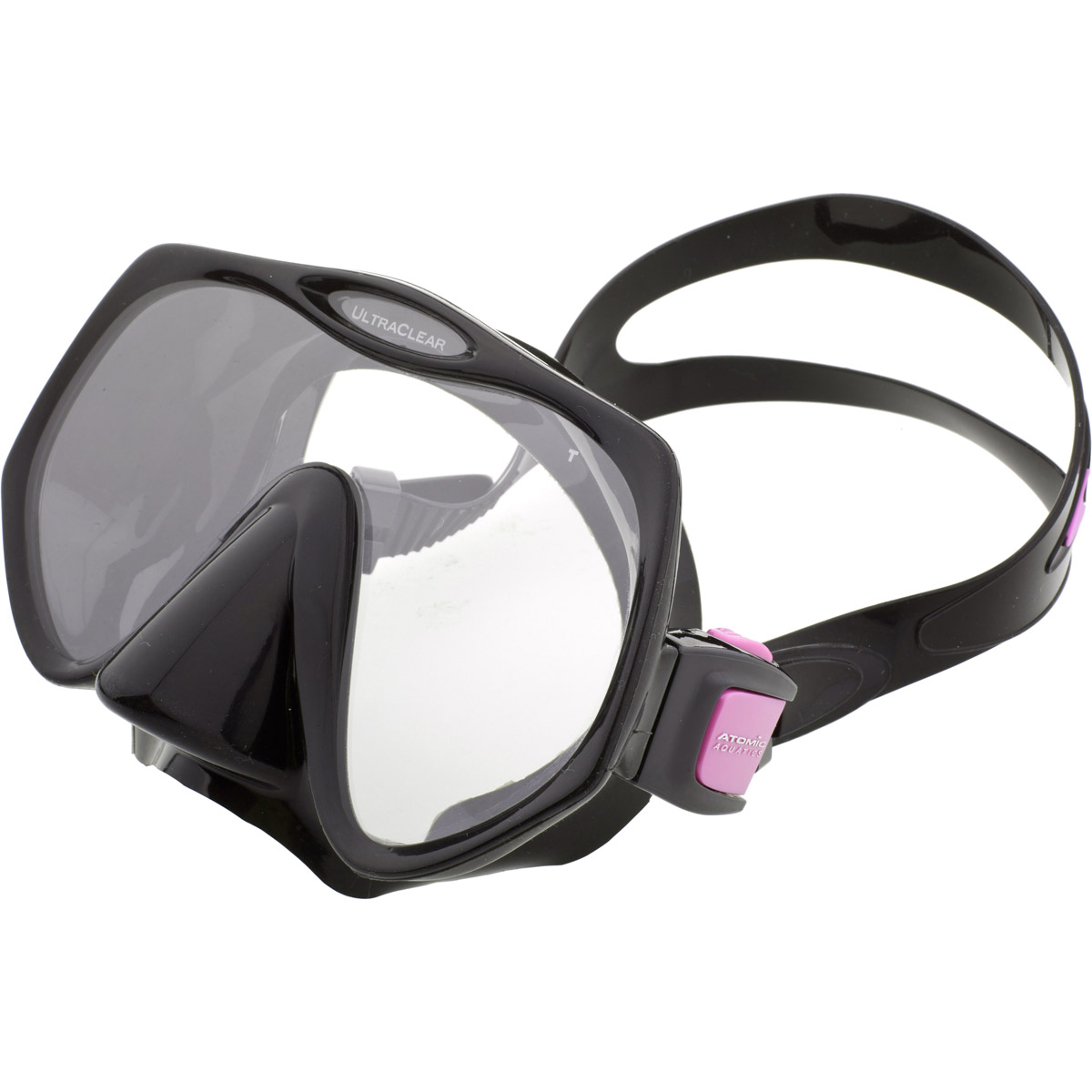
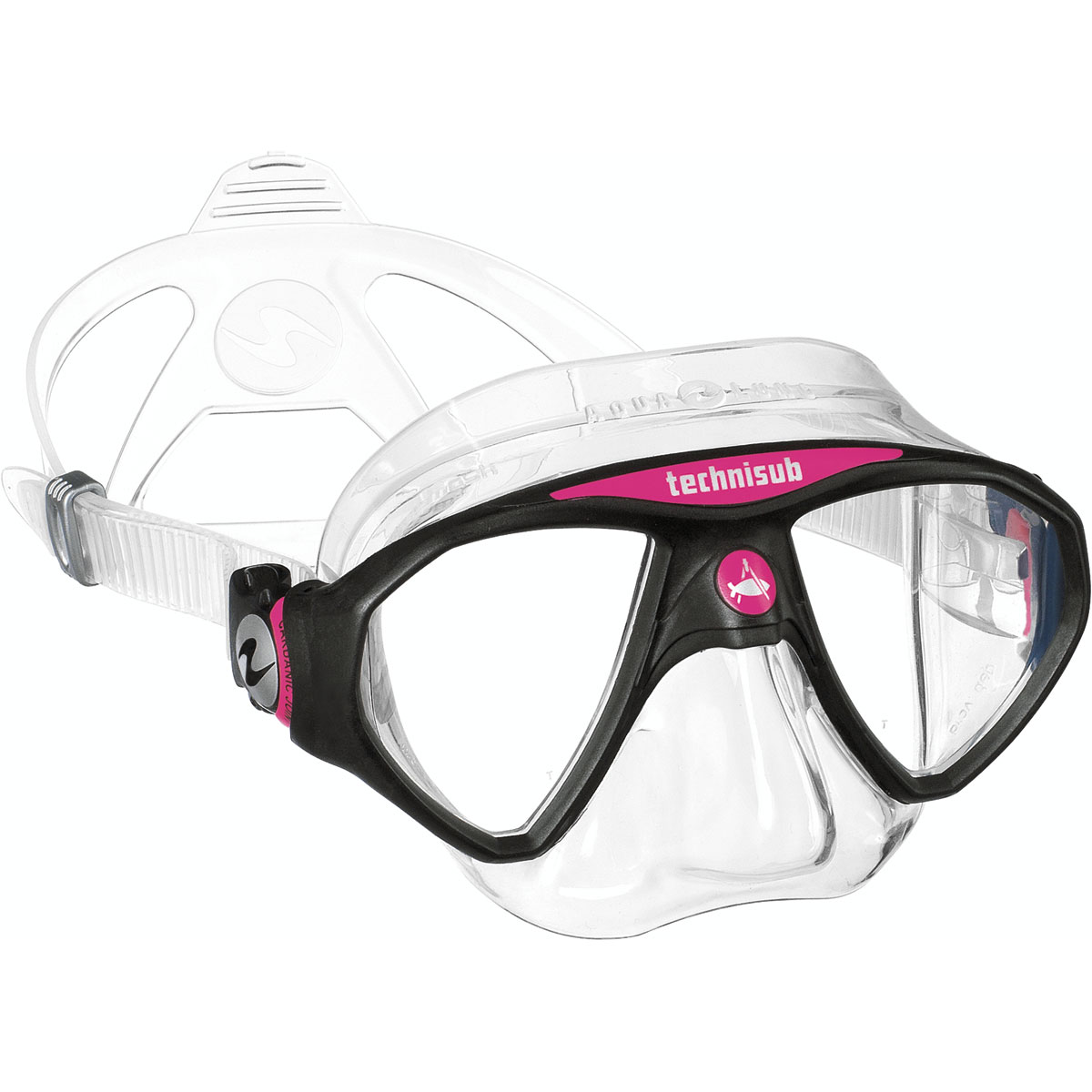
What are your thoughts? Please don't be shy!